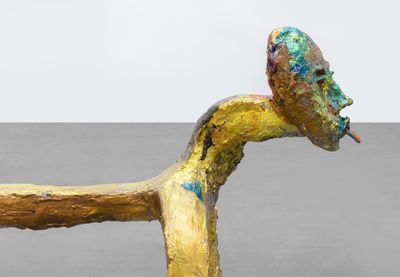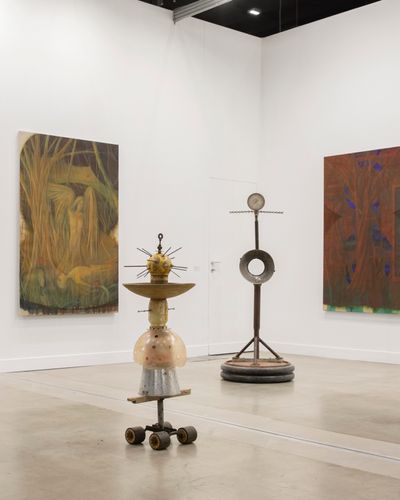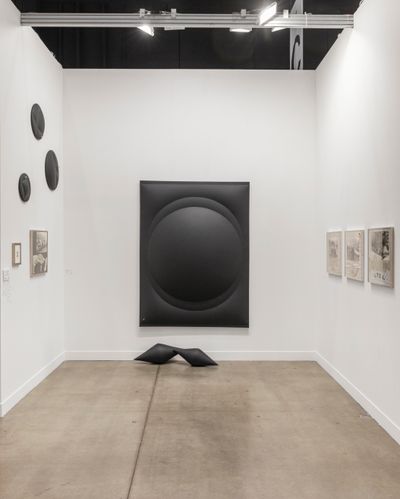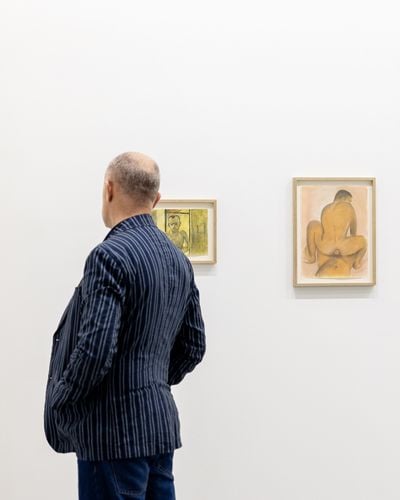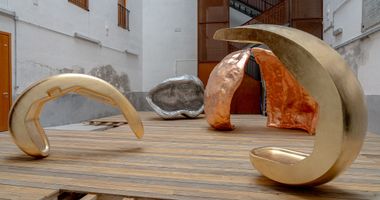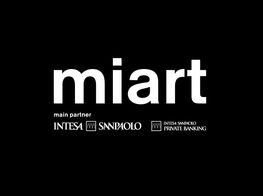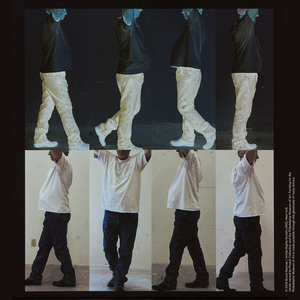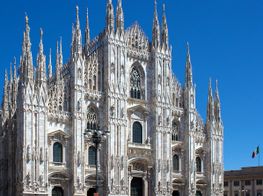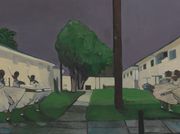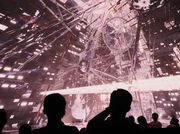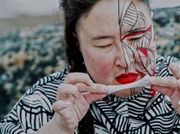Miart 2024: 6 Best Artist Presentations
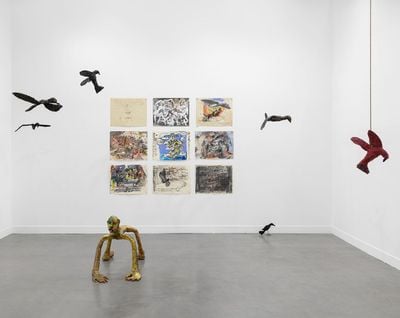
Exhibition view: Anna Boghiguian at Galleria Franco Noero, miart 2024, Milan (12–14 April 2024). Courtesy miart. Photo: Nicola Gnesi Studio.
In a city teeming with stellar exhibitions, this year's edition of miart (12–14 April 2024)—Milan's international modern and contemporary art fair—which was helmed for the fourth consecutive year by Nicola Ricciardi, impressively held its own as an outstanding art experience. Tendai John Mutambu reports on the six standout artist presentations at the fair, from Paul Thek at Galerie Buchholz to Isabella Costabile at Andrew Kreps and Soojin Kang at Gathering.
Anna Boghiguian at Galleria Franco Noero, Turin
The question of whether Anna Boghiguian's work might still possess its characteristic intensity when presented on a more modest scale was answered with a resounding yes at the booth of Turin's Galleria Franco Noero. For her efforts, the Egyptian-Canadian artist was awarded the Henraux Foundation Sculpture Commission. Now in its second year, the award consists of a cash prize, a commission in marble, to be exhibited at a public institution in Milan during Art Week 2025, and a residency at the Henraux company in Querceta, Seravezza (Lucca), where the artist will have access to craftspeople and new technologies to bring her project to fruition.
Boghiguian's presentation was realised as part of the newly inaugurated 'Portal' section, a constellation of eight galleries brought together to 'speak of our time' and to capture 'the tumultuous and ever-changing flow of the present'.1 Co-curated by Mexico City-based curator Abaseh Mirvali and Julieta González, the section, which was perfectly integrated into the rest of the fair, offered some of the most memorable presentations.
With the work on display, Boghiguian gave us a return to key themes and formats. The notebook has been a significant vehicle for the septuagenarian artist's practice in conveying a sense of immediacy—of thought and feeling in motion—by way of her sundry annotations, scribbles, and painted forms laid atop one another, as well as her characteristically febrile line drawings. While her notebooks were not on display in a literal sense, their spirit could be felt in her wall works: loose combinations of drawing and painting, shape and text, with several barely figurative parts on the verge of dissolution into pure abstraction.
In another return, Boghiguian reprised her work on Friedrich Nietzsche—to whom she dedicated a part of her retrospective at Castello di Rivoli in 2017—this time with an upturned portrait of the German philosopher and some musings on his thinking. And, while the written word in its poetic and philosophical registers continues to propel her practice, it was her sculptures—a golden, four-legged creature with its tongue sticking out and a flight of five roughly hewn birds aloft and a lone bird on the ground—that stole the show.
Paul Thek at Galerie Buchholz, Cologne/Berlin/New York
Installed well below eye level at the Galerie Buchholz booth, Paul Thek's Pink Cross and Green Buds (1975–1980) immediately caught my attention—more so than adjacent works by Wolfgang Tillmans or Isa Genzken, and even more so than the fashion designer Raf Simons, who happened to be in the booth at the same time as me.
It's a curious-looking canvas, old-fashioned almost, housed in a small gilt frame. It bears its title on a tiny plaque at the base while a golden desk lamp looms above it, affixed to the top of the frame. It's unlike the Thek works of art-world folklore I've grown accustomed to seeing in reproduction, like the meaty wax sculptures in Plexiglas boxes which the artist began in the 1960s. In its sparseness and simplicity, Pink Cross and Green Buds has more in common with paintings like his 'Diver' series (1969–1970), in which a solitary figure cuts across a near-monochrome background. In the case of the former, the titular pink cross is set against a loosely painted ochre ground and surrounded by tiny wisps of bright-green paint.
The concepts of death and decay were central to Thek's practice, from casting himself as a deceased hippie in The Tomb (1967) to his use of ephemeral materials. Here the cross, an overt symbol of death in the Christian faith, is depicted like a supine body viewed from an oblique angle, calling to mind Andrea Mantegna's Lamentation of Christ (c. 1480). Yet, this evocation of death is shot through with something else: a hint of new life, signs of rebirth and renewal in those small but potent strokes of green.
Isabella Costabile at Andrew Kreps, New York
Isabella Costabile's presentation at Andrew Kreps deservedly earned the Massimo Giorgetti Prize for an emerging artist. Hers was the work I found myself spending the most time with during the fair, running my own kind of inventory of its constituent parts.
Costabile begins with discarded objects—kitchen scales, containers, pipes, bolts, rods, and sundry tools—the detritus of everyday life. She has a gift for transforming this expanding litany into sculptures that teeter on the brink of the familiar and the alien. The pieces are beguiling and suggestive. I imagine several possible afterlives for these curious agglomerations: those with legs or wheels for bases might come to life and march or roll out of the fair, deserting their servile places as objects of art; others might transform into instruments of torture that turn against their onlookers. Yet, despite their robustness—and accompanying hint of menace—there's an odd elegance to their spindly protrusions and armatures.
Plucked from the graveyard of domestic refuse, these floor-based assemblages have a patina that intensifies their sense of decay. As the artist signalled in 2023 with her exhibition Measuring the years with things at Almanac Projects in London, hers is a practice concerned with time and memory—their feeling and texture—and how the ageing accoutrements of our everyday existence are modest shrines to the passage of time.
Franco Mazzucchelli at ChertLüdde, Berlin
Russian Constructivist brothers Naum Gabo and Antoine Pevsner set themselves a challenge in their manifesto: to make sculptures that liberate volume from mass. The Italian artist Franco Mazzucchelli, whose work was presented at ChertLüdde's award-winning booth as part of the 'Portal' section, might be said to offer a tongue-in-cheek solution to Gabo and Pevsner's challenge, for what maximises volume and minimises mass better than a large pneumatic PVC sculpture?
ChertLüdde's presentation of work by Mazzucchelli, a mainstay of the Italian art scene since the 1960s, was something of a revelation for me. Born in Milan in 1939, the artist—for years a professor of sculpture at the city's Brera Academy of Fine Arts—is perhaps best known for his interventions of the late-1960s and early 1970s. These include A. to A. (1971), in which his PVC sculptures were left outside the Alfa Romeo factory for workers to interact with. As the story goes, many employees returned late to their shifts after engaging with Mazzucchelli's project, which offered them a moment of respite from—and a disruption to—their lives as labourers on a ceaselessly churning production line.
At ChertLüdde's booth, a large red inflatable leaned against a wall alongside some of the artist's smaller pieces, including a black inflatable wall-based relief with its valve conspicuously on display, as if goading the viewer to deflate it.
A personal highlight was a series of archival framed works in which pieces of Mazzucchelli's sculptures were tucked snugly behind black and white images of the public actions in which they had been used. The overall feeling was of a vibrant and dynamic art practice, which not only synthesised the currents of the moment (land art, performance) but took play seriously as an artistic strategy.
Louis Fratino at Galerie Neu, Berlin
En route to this year's Venice Biennale, where New York-based artist Louis Fratino's paintings are included in the Central Pavillion, visitors to the booth of Berlin-based Galerie Neu could catch a glimpse of something smaller and more intimate. In this suite of works on paper, several stood out, including the cavorting duo in Untitled (2024), whose limbs become indistinguishable as they form a series of curves punctuated by touches of cross-hatching.
In another piece, two bodies are captured mid-coitus, except one is no more than a torso while the other, astride in reverse cowboy position, gives us not much more than a view of his back and his (mostly obscured) profile. Fratino's interest here is not in presenting fully realised or individuated characters, as he does in his finished canvases, but a tessellation of interconnected (body) parts.
The standout piece, for me, was a mix of figure and flora—two of Fratino's favourite subjects—in which he depicts a person holding a swaying bouquet with his head tilted in the same direction, as if to echo its motion. The composition uses one of my preferred devices by the artist, in which he depicts a figure crammed into the space of the picture frame. It gives the work an archness, a ludic touch, that elevates it beyond mere technical brilliance.
Among his influences, Fratino lists canonical heavyweights like Pablo Picasso and Henri Matisse, the impact of both of whom is evident. More recent painters, too, such as Alice Neel and Nicole Eisenman, appear to have a sway over his stylised, often homoerotic scenes. But Fratino manages to metabolise all these precedents into something of his own: a signature style of doe-eyed figures, often with large feet and hands, in scenes filled with tenderness and pathos; or, more often than not, enough bawdiness to keep the prudish at bay.
Soojin Kang at Gathering, London
One of the strongest and most memorable booths at this year's edition of miart was, undoubtedly, London-based Gathering's exhibition of work by the South Korea-born, Germany-based Soojin Kang. Her practice approaches textile as a sculptural medium in inventive ways, using natural dyes and hand-spun yarns to play with the potential of fibre to evoke something otherworldly and alien.
Confronting the viewer are a number of pod-like forms, made from tightly coiled fibres, which appear to be emerging from slabs of concrete; in fact, these are blocks of plaster augmented with handcrafted metal details. The longer I looked, the more Kang's elliptical, pod-like objects suggested some kind of expansion or proliferation, a cracking open of and a breaking free from their containers. After an attendant at the booth told me that Kang made these works during her pregnancy and immediately after giving birth, I saw the forms as resembling the crowning head of a baby.
On the walls hang beautifully draped textiles, their sculptural folds and loose threads cascading like trees festooned with Spanish moss. Two adjacent wall hangings are connected by swooping, umbilical cord-like threads—a covert means of communication, perhaps? Kang's work slips easily from something monstrous and alien that threatens to overtake and infest its surrounding space to something far more gentle and sumptuous in texture and detail.
Taking one last, lingering look, I can see that Kang's work, which appears monochrome and muted from a distance, is, in fact, flecked with tiny specks of pink and green dispersed so discreetly across its surface as to be almost imperceptible. Some work, Kang's installation remind us, rewards patient and repeated viewing—even amid the commotion of an art fair. —[O]
